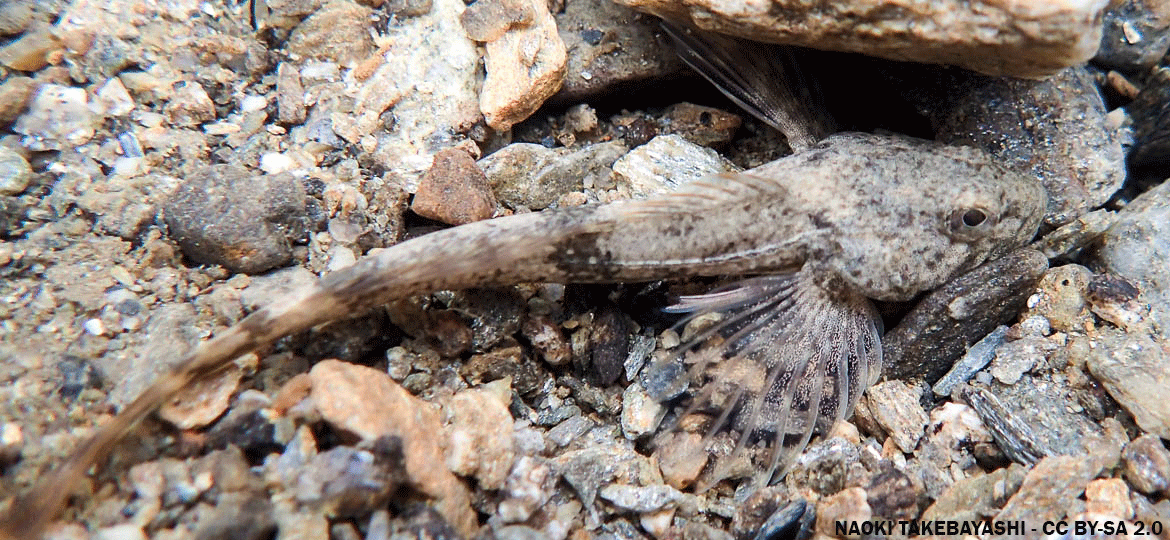
Slimy sculpin (Cottus cognatus) are distinguishable by their short body, beginning with a larger head that tapers towards the tail. Their mouth extends to below the front half of the eye and on the end of the preopercle (rear gill) is a backward-pointing spine.
Slimy sculpin have a dark brown back with mottling pattern that fades along the sides into a white underbelly. Their fins have indistinct banding, and an orange margin can be seen on the dorsal fin of breeding males.
Found mostly in the northern regions, slimy sculpin inhabit the area from New Brunswick through the Northwest territories, Alaska, and Siberia. In the lower 48, they are found from the Atlantic Coast drainages of Maine to Virginia. They are widely occurring in Vermont cold water streams and in deep areas of Lake Champlain. They can grow up to five inches and live up to five years.
Habitat
Generally congregating in fast-flowing areas of clear cold streams as well as the deeper areas of colder lakes, the slimy sculpin often inhabits the same waterbodies as brook trout and other cold-water species. They have been found living in depths up to 420 feet.
They are very sensitive to warm water and siltation unlike the mottled sculpin. Both species, however, are relatively resistant to acidic waters, being able to inhabit waters in pH levels as low as 5.5.
Reproduction
Spawning will start at 40 to 60°F in the spring. Like mottled sculpin, male slimy sculpin establish nesting sites under rocks and tree root. Individual males will spawn with one or more females who deposit up to 1,400 eggs underneath the surface of the rock or root.
Males remain and guard the nest and fan the eggs for up to four weeks until temperatures reach 46°F. Males continue to protect the young sculpin until they have begun actively feeding. Individuals will sexually mature between the ages of two and four years old.
Diet
Most slimy sculpin feed on bottom-dwelling aquatic insect larvae and crustaceans. Larger individuals may start to eat smaller fish. In streams, slimy sculpin will feed during the day while those in lakes will generally feed at night.
Management
This species does not have a minimum length or daily limit. Work conducted by Vermont Fish & Wildlife staff to help conserve these populations includes, but is not limited to:
- Improving aquatic organism passage.
- Protecting and restoring fish habitat.
- Monitoring local fish communities.
- Engaging in regulatory proceedings, providing direct input to protect aquatic habitats on individual development projects through Act 250, Section 248, Stream Alteration, Dam Safety, hydroelectric relicensing, water withdrawals, etc.
Status
This species is not listed as threatened, endangered and is not a species of greatest conservation need in Vermont.
Fun Facts
- Other common names: blob, chucklehead, Miller’s thumb, rock or brook cusk, slimy muddler, northern sculpin, stargazer, cockatouch, chabot visquex.
- Slimy sculpin are found in many of the small cold water Vermont streams where brook trout are also found.
